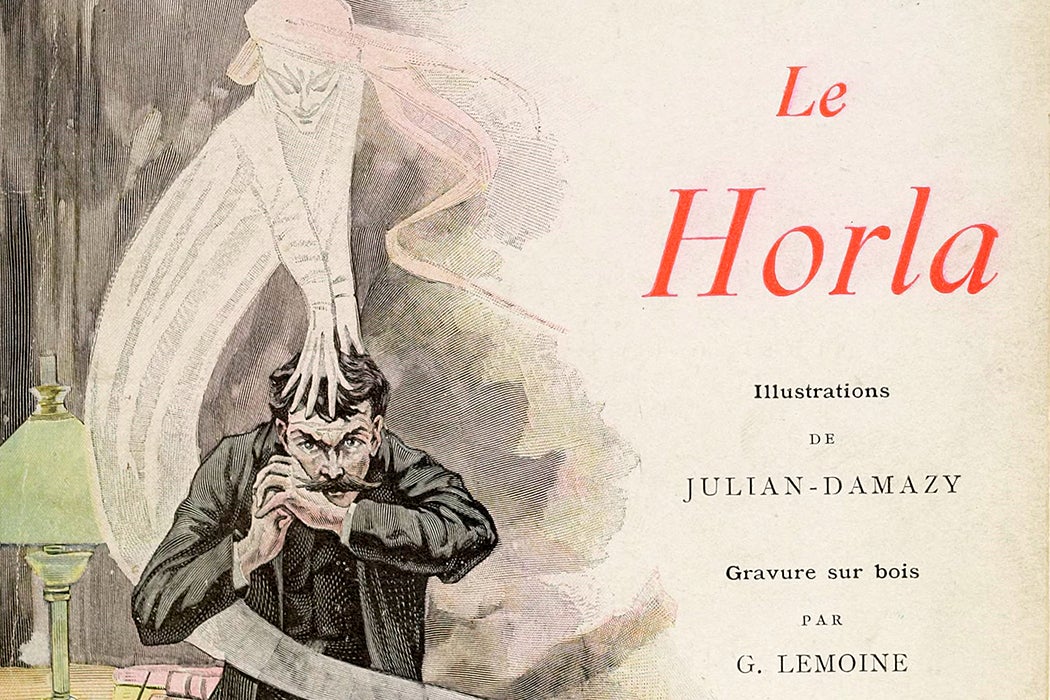French author Guy de Maupassant’s 1887 short story “The Horla” is a horror tale that speaks to the base fears of many: having your peaceful home life invaded by an entity you cannot control, watching your entire belief system be eroded, and being punished for doing nothing wrong. Maupassant slips an extra ingredient into the mix, too: xenophobia, which was running rampant in France in the late nineteenth century, an age where the country was beginning to experience itself as a multicultural hub. It was an experience that wasn’t embraced by everyone.
The premise of “The Horla” is a simple but terrifying one. The story starts off pleasantly enough, with Maupassant’s unnamed narrator, a well-off gentleman of leisure who lives in the countryside, giving a friendly wave to a passing boat from South America. Unbeknownst to him, he cursed himself with the gesture. A supernatural monster regards his wave as a genuine invitation—similar to how vampires need to be welcomed in before stepping over a threshold—and proceeds to haunt him, terrorize his manor, and slowly drive him to madness.
Many social and literary scholars have pinned down this plot as a thinly disguised metaphor for a disease caught either from traveling abroad or brought into a country by an outsider. This is the stance Lisa Ann Villarreal takes in her essay for Nineteenth-Century French Studies. She maintains that Maupassant’s text is blatantly racist rather than subtly so, and that the Horla as an entity represents the unfortunate and not uncommon viewpoint that only people from other, less advantaged cultures are unclean and susceptible to carrying contagious illnesses.
“At the same time,” she writes, quoting both literary theorist Philip G. Hadlock and Maupassant,
Le Horla narrates “a primal encounter with an unexplainable otherness” that is always already “an out there (hors là)”…which manifests among other things as the difference between Old World and New, and between Global North and South. For the Horla, the narrator insists, comes from Brazil, “là-bas, où sa race est née”…Brazil, “a country whose place and race situated it, in many ways, closer to the ‘barbarous’ than the civilized nations”…and which represented an important frontier in the expansion of European colonialism.
Villarreal implies that Maupassant intended for his audience to visualize the Horla perhaps not as a snow-white ghost, but as someone or something with darker hues—someone the average French reader would associate with a mysterious virus brought from far away, in this case, Brazil.
Weekly Newsletter
“Critical, too,” she notes,
is the fact that not only does the Horla represent a racial other, but it enters the story already entangled in an economy of signification that bespeaks the convergence of various networks of knowledge: biological theories of race, medical knowledge concerning tropical disease, and the political discourse of Empire.
It’s unlikely that Maupassant would have gotten away with publishing such a story in our modern times; the sneaky racism wouldn’t have made it past the public. The Horla may have managed to slip into an unlucky narrator’s home, but Maupassant’s bigoted setup has less of a chance with twenty-first-century readers.
Support JSTOR Daily! Join our membership program on Patreon today.







